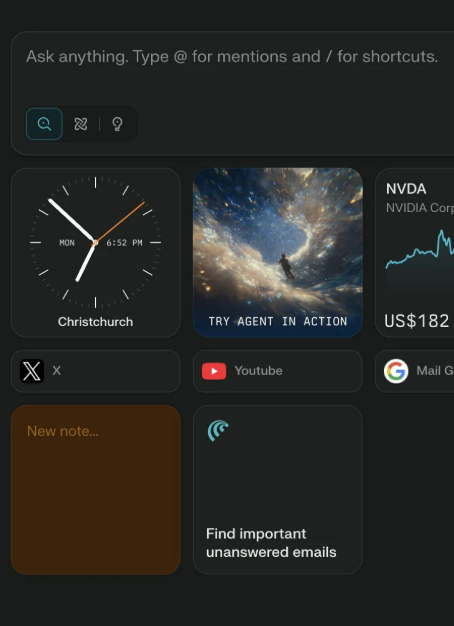脉搏血氧计的选购指南 --知识铺
普罗维登斯西达斯-西奈塔扎纳医疗中心重症监护室医疗主任托马斯·亚德加医学博士说,脉搏血氧计是有用的设备,可以帮助检查患有潜在心脏或慢性肺部疾病的患者的心率和氧饱和度。当氧饱和度低于健康水平时,这种情况并不总是很明显,特别是如果您患有以呼吸短促为常见症状的慢性疾病。能够在家中准确测量您的氧合情况可以节省您不必要的去看医生(或紧急护理)的时间,并在您需要紧急医疗护理时提醒您。认识到新冠病毒感染会导致呼吸困难,并且这些困难可以在家中通过这些小型、方便的设备检测到,这让许多人想知道是否应该在家庭健康工具库中添加脉搏血氧计。
为了帮助您做出明智的选择,我们在实验室测试了 10 款脉搏血氧计,以确定哪些最容易设置和使用,哪些最舒适,读数最准确,哪些最容易阅读和解释我们的结果。我们医学专家委员会的一位肺科医生还审阅了这篇文章,以了解脉搏血氧计的检查内容、准确性以及谁可以从使用脉搏血氧计中受益,以确保其医学和科学准确性。
脉搏血氧计的工作原理
南佛罗里达州肺科、重症监护和睡眠障碍研究所的肺部健康专家 Luis Javier Peña-Hernández 医学博士表示,脉搏血氧计的工作原理是用红外线测量甲床的颜色变化。光估计流经该组织的血液的氧饱和度。这可以为用户提供有关其氧合的重要信息,当慢性呼吸状况(甚至是新冠肺炎或流感)影响他们的氧气水平时提醒人们。
佩尼亚-埃尔南德斯博士说,任何患有血氧饱和度下降的慢性呼吸系统疾病的患者都可以从家里拥有脉搏血氧计受益。这包括需要患者在家使用氧气的疾病,例如慢性阻塞性肺病(COPD)和间质性肺纤维化,以及氧合可能受损的疾病,例如充血性心力衰竭和慢性肾衰竭。
我们的首选
- 最佳整体表现:Oxiline Pulse 9 Pro
- 最易于使用:Zacrate Pro 系列 500DL
- 最佳预算:Insignia 脉搏血氧计
- 最佳大显示屏:Accare 指尖脉搏血氧仪
- 最适合儿童:Zacrate 数字儿科手指脉搏血氧仪
- 最佳应用程序:Wellue 可穿戴式氧气监测仪
Our Testing Process
With the supervision of medical professionals, the Health team tested 10 pulse oximeters in our Lab to see how easily and accurately they could measure our oxygen saturation. We evaluated each device for the following factors, which we determined to be the most important when choosing between pulse oximeters available for at-home use:
- Reading consistency and Accuracy: All of our testers were asked to abstain from wearing any nail polish on their fingers (it can interfere with test results), and hand warmers were provided to improve the accuracy of test results. We performed several tests.
First, a medical professional measured our blood oxygen levels, and then we compared those results to the readings given by each pulse oximeter to see how close the readings were.
We also repeated our testing on both hands five minutes apart and performed repeated tests before and after 30 seconds of vigorous exercise. - Setup and Ease of Use: We evaluated each device to see how ready it was to use right out of the box and how quickly and easily the display with our results could be read.
As for fit, we considered how accommodating the device would be to many different sizes of fingers and whether we had any discomfort while using it, such as pinching or chafing. - Data display: We considered how clearly our results were displayed and how easy it was to interpret them.
We considered whether the device could store our data over time and whether it came with instructions for understanding readings and telling one type of reading (such as oxygenation) apart from another (like blood pressure or heart rate).
For devices with app connectivity, we also assessed how our data was transmitted and recorded in the app and whether it could be shared with healthcare providers. - Portability: We noted its size, weight, and travel options, such as whether it comes with a storage case or lanyard for easy carrying.
The Experts
We consulted with a team of experts for their professional opinions to provide the most accurate information on using and purchasing a pulse oximeter.
- Thomas Yadegar, M.D., medical director of the intensive care unit at Providence Cedars-Sinai Tarzana Medical Center
- Luis Javier Peña-Hernández, MD, a lung health specialist at the Pulmonary, Critical Care, and Sleep Disorders Institute of South Florida
- David Portugal, M.D., Cardiologist at Memorial Hermann Southwest Hospital.
What to Look for in a Pulse Oximeter
Ease of Use
Any oximeter you choose should be easy to use. You may not have the time or ability to fiddle with devices that require a lot of setup or constant adjustments on your finger.
The oximeter should also be easy to read and interpret, so you’re not left scratching your head over your results. You should also consider whether more than one person will need to use the oximeter and whether you need the device to store or record information for one person.
You don’t have to opt for a super high-tech option, but your pulse oximeter should be of good enough quality to reliably provide the results you need.
Fit
Your pulse oximeter should fit well on your finger to increase the likelihood of accurate results.
This means it should be able to open wide enough to fit your finger, close snugly (but not too tightly), and you should be able to leave it in place for as long as needed to get a reading.
If your oximeter can’t accommodate your finger size, falls off while you’re waiting for a reading, or is otherwise uncomfortable while you’re using it, it might not be the right fit for you.
Accuracy
Accuracy is the most important feature when choosing a pulse oximeter, so features highlighting whether light transmission is sufficient may be a helpful indicator of better accuracy. Less expensive pulse oximeters do not necessarily correlate to less accuracy—so you should look for a device that’s accurate and easy to use, above all else.
While you won’t usually be able to check your oximeter’s readings against a professional’s, you can test your device’s accuracy and reading consistency in other ways.
Try taking a reading, waiting one minute, and then taking another with the same finger (without moving around between readings). If the reading is the same or close to it, then that indicates that the oximeter gives you fairly consistent readings each time you use it.
Also, according to Dr. Portugal, pulse oximeters are quite accurate for measuring heart rate. He adds that the only issue that may come up is if you have an irregular heartbeat or premature heartbeat. Sometimes, that can temporarily throw off the monitor and make it hard to obtain an accurate pulse rate on the spot.
Data display
It is crucial for you to select a device that features a large and clear display, especially if you have any visual impairment. The bigger and brighter the display, the easier it will be for you to read.
Additionally, you may want to consider a device that helps you understand how to interpret your readings. However, a healthcare professional can assist you with this, especially if you have any pre-existing health conditions that might impact your readings.
At sea level, for an average person with no other health conditions, an oxygen saturation below 95% is likely abnormal, says cardiologist David Portugal, M.D., of Memorial Hermann Southwest Hospital.
A saturation below 90% would be considered significantly abnormal and could be a sign of a heart or lung condition.
If app connectivity is important for your oximeter, make sure to choose a device that can connect to either its designated app or the app of your choice. Many oximeters do not have this capability.
Additionally, ensure that the app will display and record the information you desire, including blood pressure, heart rate, and oxygenation.
Portability
At-home oximeters are usually small and portable, so you can easily carry them around in your pocket or purse. However, it’s important to consider where you’ll need to use it.
You may also want to think about whether you prefer a carrying case or lanyard to keep track of your device, and make sure it’s not too big or heavy to transport easily.
Type
According to Dr. Portugal, pulse oximeters are the same in basic terms: They use light waves to measure the oxygen concentration in the hemoglobin in red blood cells. The only difference, he says, is how it’s attached to the body: The most standard pulse oximeter you will likely find online or at the pharmacy is a clip-on device, whereas, in the hospital, disposable, adhesive-type oximeters are more common.
If you want to streamline your devices, you may also be able to purchase a smartwatch that can serve as a pulse oximeter, Dr. Portugal notes, so you don’t need to keep track of multiple devices.
Who We Are
Sarah Bradley has been a freelance writer since 2017, tackling health commerce articles, product reviews, and shopping guides on everything from dry skin moisturizers and wart removers to menstrual cups and toothbrushes for braces.
She personally tests products, so she knows what makes a good product stand out from a great one (and really, really wants to tell you about it).
- 原文作者:知识铺
- 原文链接:https://index.zshipu.com/ecg/post/20240402/%E8%84%89%E6%90%8F%E8%A1%80%E6%B0%A7%E8%AE%A1%E7%9A%84%E9%80%89%E8%B4%AD%E6%8C%87%E5%8D%97--%E7%9F%A5%E8%AF%86%E9%93%BA/
- 版权声明:本作品采用知识共享署名-非商业性使用-禁止演绎 4.0 国际许可协议进行许可,非商业转载请注明出处(作者,原文链接),商业转载请联系作者获得授权。
- 免责声明:本页面内容均来源于站内编辑发布,部分信息来源互联网,并不意味着本站赞同其观点或者证实其内容的真实性,如涉及版权等问题,请立即联系客服进行更改或删除,保证您的合法权益。转载请注明来源,欢迎对文章中的引用来源进行考证,欢迎指出任何有错误或不够清晰的表达。也可以邮件至 sblig@126.com


